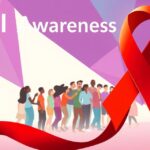Do STIs Go Away? Sexually Transmitted Infections
Sexually transmitted infections (STIs) are diseases that are primarily spread through sexual contact. These infections can be caused by various germs, including viruses, bacteria, and fungi. Many people with STIs do not exhibit symptoms, making regular testing crucial for detection and treatment.

The question of whether STIs can resolve on their own is complex. While some STIs can be cured with proper medical treatment, others may require ongoing management. Understanding the differences between these infections and their treatment options is vital for maintaining sexual health.
Key Takeaways
- Sexually transmitted infections (STIs) can be caused by viruses, bacteria, or fungi.
- Many STIs do not show symptoms, emphasizing the need for regular testing.
- Some STIs can be cured with treatment, while others require lifelong management.
- Understanding the type of STI and its treatment is crucial for sexual health.
- Prompt medical intervention is necessary to prevent serious health complications.
Understanding Sexually Transmitted Infections (STIs)
Healthcare professionals use the term “sexually transmitted infections” (STIs) to describe a group of infections that various pathogens spread through sexual contact. Bacteria, viruses, or parasites cause these infections, and they can affect anyone who is sexually active.
What Are STIs?
Pathogens cause STIs when they enter the body through sexual contact, including vaginal, anal, or oral sex. People can also transmit these infections by sharing needles or from mother to child during childbirth.
How STIs Are Transmitted
People can transmit STIs through various routes, including sexual contact and non-sexual means. Learning how STIs spread plays a crucial role in prevention and reducing risk.
The Difference Between STIs and STDs
While often used interchangeably, the terms STI and STD have distinct meanings. An STI refers to the presence of an infection, whereas an STD refers to an infection that has caused symptoms or complications.
When individuals understand what STIs are, how they spread, and how they differ from “sexually transmitted diseases” STDs, they can take better steps to protect themselves and their partners.
Do STIs Go Away on Their Own?
Understanding whether STIs can resolve on their own is crucial for determining the best course of action. While the body’s immune system may be able to fight off some STIs, this is not a reliable outcome for all types of infections.
Can Your Body Fight Off STIs?
The human body can clear certain STIs, such as some strains of the Human Papillomavirus (HPV), without medical intervention. However, this is not the case for most bacterial and viral STIs, which require proper medical treatment to prevent long-term health consequences.
Why Self-Resolution Is Not Reliable
Relying on the body’s ability to clear an STI can lead to serious health complications. If symptoms disappear, it doesn’t mean the infection is gone; it may still be present and causing damage. Untreated STIs can result in negative health consequences for the individual and their sexual partners.
- Risk of developing complications
- Experiencing long-term health effects
- Unknowingly transmitting infections to partners
The Importance of Medical Treatment
Seeking professional medical treatment is essential for effectively managing STIs. Early intervention leads to better health outcomes, and proper testing and diagnosis are critical for determining the appropriate treatment plan.
Medical treatment can significantly reduce the risk of complications and transmission of STIs. A healthcare provider can offer guidance on the best treatment options and help manage symptoms.
Curable vs. Chronic STIs
Not all STIs are created equal; some can be completely cured, while others require lifelong management. This distinction is crucial for understanding the nature of the infection and determining the appropriate treatment approach.
Bacterial STIs That Can Be Cured
Bacterial STIs, such as chlamydia, gonorrhea, and syphilis, are generally curable with appropriate antibiotic treatment. However, some strains have developed antibiotic resistance, requiring more complex treatment approaches.
| Bacterial STI | Treatment |
|---|---|
| Chlamydia | Antibiotics (e.g., azithromycin) |
| Gonorrhea | Antibiotics (e.g., ceftriaxone) |
| Syphilis | Antibiotics (e.g., penicillin) |
Viral STIs That Require Lifelong Management
Viral STIs, such as HIV, herpes (HSV-1 and HSV-2), and certain HPV strains, cannot be completely eliminated from the body but can be effectively managed with proper medication.
Parasitic STIs and Their Treatment
Parasitic STIs like trichomoniasis can be treated with specific medications. Understanding the transmission, symptoms, and treatment protocols is essential for effective management.

Even for chronic STIs, modern medicine offers effective management strategies that allow people to live healthy, normal lives with minimal symptoms and reduced transmission risk.
Common Types of STIs and Their Treatments
Among the numerous STIs, some are more prevalent and require specific attention due to their impact on public health. These infections can have serious health consequences if left untreated, making it crucial to understand their symptoms and treatment options.
Chlamydia and Gonorrhea
Healthcare providers frequently diagnose chlamydia and gonorrhea as two of the most common STIs in the United States. Bacteria cause chlamydia, and if left untreated, it can permanently damage a woman’s reproductive organs. Gonorrhea, another bacterial infection, can affect the genitals, rectum, and throat. Both are typically treated with antibiotics, although gonorrhea has developed antibiotic resistance in some strains.

Syphilis
Syphilis is an STI that can be transmitted during vaginal, anal, or oral sex. It progresses through several stages: primary, secondary, latent, and tertiary. If caught early, syphilis can be cured with antibiotics. Untreated syphilis can lead to serious health problems, including brain and nerve issues, blindness, or death.
Trichomoniasis
Trichomoniasis is a common parasitic infection that often presents differently in people of all genders. It is curable with antibiotic treatment, but reinfection rates are high.
Mycoplasma Genitalium
Mycoplasma genitalium is an emerging STI concern that can cause urethritis in men and cervicitis in women. Testing for this infection can be challenging, and treatment approaches are still evolving.
Understanding these common STIs is key to effective treatment and prevention. Regular testing and appropriate treatment can significantly reduce the risk of complications and transmission.
- Chlamydia and gonorrhea are prevalent bacterial STIs requiring specific antibiotic treatments.
- Syphilis can be cured if detected early, emphasizing the importance of timely medical intervention.
- Trichomoniasis is a curable parasitic infection with high reinfection rates.
- Mycoplasma genitalium is an emerging concern with challenges in testing and treatment.
Viral STIs: Management and Long-Term Outlook
Viral STIs, though incurable, can be managed with proper medical care. This section will focus on three major viral STIs: genital herpes, human papillomavirus (HPV), and HIV.
Genital Herpes (HSV-1 and HSV-2)
Genital herpes is caused by two types of viruses, HSV-1 and HSV-2. While there’s no cure, antiviral medications can reduce symptom severity and frequency. Understanding transmission methods and outbreak triggers is crucial for managing the condition.

Human Papillomavirus (HPV)
HPV is the most common STI in the United States, with numerous strains. Most cases resolve on their own within two years, but persistent infections can lead to serious health issues, including cancer. Vaccination is key to preventing some of the most dangerous strains.
HIV and AIDS
HIV infection can progress to AIDS if left untreated. However, modern antiretroviral therapy (ART) has transformed HIV (myths) into a manageable chronic condition. Adherence to treatment protocols is vital for maintaining a healthy life.
With proper medical care and adherence to treatment, individuals with viral STIs can lead normal, healthy lives. Understanding the long-term implications and management strategies is essential for maintaining quality of life.
Recognizing STI Symptoms
Recognizing the symptoms of sexually transmitted infections (STIs) is crucial for early detection and treatment. STIs can manifest through a variety of symptoms, which can differ significantly depending on the type of infection and individual factors.
Common Signs and Symptoms
Common symptoms of STIs include unusual discharge, genital sores or lesions, itching, burning during urination, and pain during sexual activity. For instance, chlamydia and gonorrhea can cause abnormal discharge and painful urination, while herpes can lead to painful sores in the genital area.
Asymptomatic Infections
Many STIs, particularly in women, are asymptomatic, meaning they show no visible symptoms. This underscores the importance of regular testing, even for individuals who feel healthy.
When to See a Doctor
If you experience any unusual genital symptoms or have been exposed to an STI, it’s essential to consult a healthcare provider promptly. Symptoms such as fever, rash, or swollen lymph nodes can also indicate an STI.
| Symptom | Possible STI |
|---|---|
| Unusual discharge | Chlamydia, Gonorrhea |
| Genital sores | Herpes, Syphilis |
| Painful urination | Chlamydia, Gonorrhea |

Regular testing is crucial for detecting STIs, especially since many infections are asymptomatic. If you’re sexually active, consult with your healthcare provider about how often you should get tested.
Complications of Untreated STIs
If left untreated, STIs can lead to serious health complications that affect not only the individual but also their sexual partners and, in the case of pregnancy, the unborn child. The consequences of not treating STIs can be severe and long-lasting.
Short-Term Health Consequences
In the short term, untreated STIs can cause significant discomfort and health issues. For example, infections like chlamydia and gonorrhea can lead to increased pain, spread of infection to surrounding tissues, and a heightened risk of transmitting the infection to sexual partners.
- Increased pain and discomfort
- Spread of infection to surrounding tissues
- Heightened risk of transmission to sexual partners
Long-Term Health Risks
Long-term health risks associated with untreated STIs are substantial. Infections such as chlamydia and gonorrhea can lead to pelvic inflammatory disease (PID), which can cause infertility, ectopic pregnancy, and chronic pelvic pain. Syphilis, if left untreated, can result in complications like meningitis, blindness, hearing loss, and strokes.
- Pelvic inflammatory disease (PID)
- Increased risk of infertility and ectopic pregnancy
- Neurological and cardiovascular complications
Fertility and Pregnancy Complications
Untreated STIs can have a significant impact on fertility and pregnancy. In people with uteruses, untreated infections can lead to PID, causing permanent damage to reproductive organs. In people with penises, infections can lead to epididymitis and orchitis. Moreover, untreated STIs can be transmitted to unborn children during pregnancy or childbirth, potentially causing serious health problems, including blindness, pneumonia, and stillbirth.
STI Testing and Diagnosis
Getting tested for STIs is a crucial step in maintaining your sexual health. A doctor diagnoses an STI with a physical exam and testing. During your visit, the doctor will ask about your medical history, symptoms, and sexual history.
Types of STI Tests
There are different tests for different STIs. Tests to diagnose STIs may use a urine sample, cheek swabs, or blood test. The doctor may need to take a fluid sample from sores on the skin or from the vagina, cervix, penis, anus, or throat.
| Test Type | Description | STIs Detected |
|---|---|---|
| Urine Sample | A urine sample is collected and tested for STIs. | Chlamydia, Gonorrhea |
| Blood Test | A blood sample is drawn and tested for STIs. | HIV, Syphilis, Herpes |
| Swabs | Fluid samples are taken from the affected area. | Chlamydia, Gonorrhea, Herpes |
How Often to Get Tested
If you are sexually active, you should get an STI or STD test at least once a year, more often if you have multiple sex partners. Your doctor or healthcare provider will advise on the frequency of testing based on your risk factors.
What to Expect During Testing
During your visit, the doctor will perform a physical exam to examine your genitals and look for any signs of infection. They will also discuss your test results with you and provide guidance on treatment if necessary.
Preventing STIs and Reducing Risk
Reducing the risk of STIs requires knowledge of preventive measures and consistent practice. The most effective way to prevent STIs is by avoiding vaginal, anal, or oral sex. However, for those who are sexually active, there are several strategies to lower the risk.
Safe Sex Practices
Using a condom correctly every time you have sex is crucial. This includes vaginal, anal, and oral sex. Barrier methods like male and female condoms, dental dams, and latex gloves can significantly reduce the risk of STI transmission.
| Barrier Method | Effectiveness for STI Prevention | Usage Tips |
|---|---|---|
| Male Condoms | Highly effective for STIs, including HIV | Use correctly, check expiration dates |
| Female Condoms | Effective for STIs, including HIV | Insert correctly before sex, ensure proper fit |
| Dental Dams | Effective for oral sex STI prevention | Use during oral sex, avoid reuse |
Vaccination Options
Vaccines are available to prevent certain STIs, notably hepatitis B and HPV. The HPV vaccine is recommended for individuals up to age 26, while the hepatitis B vaccine is recommended for all ages.
Communication with Sexual Partners
Open communication with sexual partners about STI status, testing history, and protection preferences is vital. Discussing these topics before engaging in sexual activity can help prevent STIs.
Anyone who is sexually active should get tested for STIs at least once a year. Limiting the number of sexual partners and avoiding substance use before sex can also reduce the risk.
In Conclusion
As we navigate the complexities of STIs, it’s clear that knowledge is key to prevention and treatment. Sexually transmitted infections (STIs) are a significant health concern, affecting millions of Americans each year. While some STIs can be cured with proper treatment, others require lifelong management.
The distinction between curable bacterial infections and chronic viral infections is crucial for understanding treatment options. Bacterial STIs can often be eliminated with antibiotics, whereas viral STIs, such as herpes and HIV, can be managed but not cured with current medical treatments.
Early detection through regular testing and prompt medical intervention at the first sign of symptoms is vital to prevent complications and reduce transmission. Seeking treatment is a responsible health decision, free from shame or stigma. By prioritizing sexual health through preventative measures, open communication with partners, and regular consultations with healthcare providers, individuals can significantly reduce their risk of contracting STIs.
By taking proactive steps towards sexual health, individuals can protect themselves and their partners, contributing to a healthier community. Regular testing, safe sex practices, and open dialogue with healthcare providers are essential components of maintaining good sexual health.
FAQ For Do STIs Go Away
Q1. What are the most common types of STIs?
Ans: The most common STIs include chlamydia, gonorrhea, syphilis, trichomoniasis, genital herpes, human papillomavirus (HPV), and HIV.
Q2. Can STIs be cured?
Ans: Some STIs, such as chlamydia and gonorrhea, can be cured with antibiotics. However, viral STIs like genital herpes, HPV, and HIV are chronic and require lifelong management.
Q3. How are STIs transmitted?
Ans: STIs are primarily transmitted through vaginal, anal, or oral sex with an infected partner. Some STIs can also be transmitted through skin-to-skin contact or from mother to child during pregnancy or childbirth.
Q4. What are the symptoms of an STI?
Ans: Symptoms vary depending on the type of STI. Common symptoms include unusual discharge, genital itching or burning, painful urination, and genital sores or ulcers. Some STIs, however, may not exhibit noticeable symptoms.
Q5. How often should I get tested for STIs?
Ans: The frequency of STI testing depends on individual risk factors, such as the number of sex partners and the type of sex practiced. Generally, sexually active individuals should get tested annually or whenever they have a new sex partner.
Q6. Can I get vaccinated against STIs?
Ans: Yes, vaccines are available against certain STIs, such as HPV and hepatitis A and B. Vaccination is an effective way to prevent these infections.
Q7. What are the complications of untreated STIs?
Ans: Untreated STIs can lead to serious health complications, including infertility, increased risk of HIV transmission, and certain types of cancer. Pregnant people with untreated STIs may also experience pregnancy complications.
Q8. How can I reduce my risk of getting an STI?
Ans: People can reduce their risk of infection by practicing safe sex, using condoms consistently, limiting their number of sex partners, and getting vaccinated against certain STIs.
Q9. Can I still have sex if I have an STI?
Ans: If you have an STI, you should inform your sex partners and take steps to prevent transmission by using condoms or abstaining from sex until you treat or manage the infection.













Scratch cards always feel like a little bit of hopeful math, right? 😉 It’s fascinating how platforms like jiliboss slot download are leaning into data & transparency – a smart approach for players who like to understand the odds! Fun stuff.